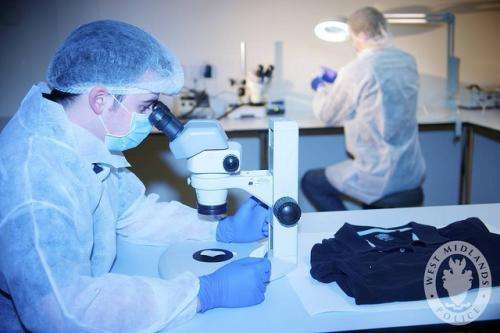Hair-degrading fungus comes under the microscope

A forensic biologist has revealed some process involved in hair degradation previously associated with the dead can exist in hairs on the living.
Murdoch University PhD candidate Silvana Tridico has undertaken the first in-depth study into pre-and post-mortem bio-degradative effects on hair.
The most important finding is that fungal tunnelling, where the hair is eaten by fungus, occurs in living animals and not just post-mortem as previously thought.
The finding has implications for the fields of forensics, archaeology and conservation biology where mis-identification of fungal tunnelling could result in incorrectly classifying species.
In forensics, investigators previously finding a missing person's hair exhibiting fungal damage at a suspect's house may have concluded the person was dead and the suspect had been involved in moving the body from a clandestine grave.
Based on the new evidence, the person may be alive, albeit with a fungal infection.
"This taphonomic [after death] feature—fungal tunnelling of hairs occurs when you have a lot of exposure to soil; fungi live in soil," Ms Tridico says.
"Their sole purpose is to eat keratin—protein found in horns, nails, hooves and hair.
"But you see them on healthy animals like shrews that predominately live in undergrowth and have a lot of contact with soil.

"These animals can become infected."
Ms Tridico studied 450 hairs including those from the scalp of ancient humans, the flanks of polar bears and coarse hair from woolly mammoths.
She then honed in on 95 hairs which were studied using light microscopy and electron microscopy to give much greater detail.
She concluded the only process found only after death is post-mortem banding—a longitudinal band above the root of the hair.
Ms Tridico says when someone dies and its 'game on' for bacterial degradation of the body including hairs, bacteria preferentially target hair roots that were actively growing at time of death.
The bacteria invade the hair shaft near the root, giving it a banded effect.
"If you find a clump of hair in a missing person case or mass disaster and see post- mortem banding you know it's a recovery not a rescue," she says.
Ms Tridico says the research promotes the value of proficiency and expertise in the study of hair in fields where the use of an Atlas for hair identification, rather than a microscopic examination is becoming more common.
She says accurate animal hair examination for forensics and conservation biology, is essentially an exercise in taxonomy.
Ms Tridico says the research promotes the value of proficiency and expertise in the study of hair in fields where the use of an Atlas for hair identification, rather than a microscopic examination is becoming more common.
Provided by Science Network WA



















